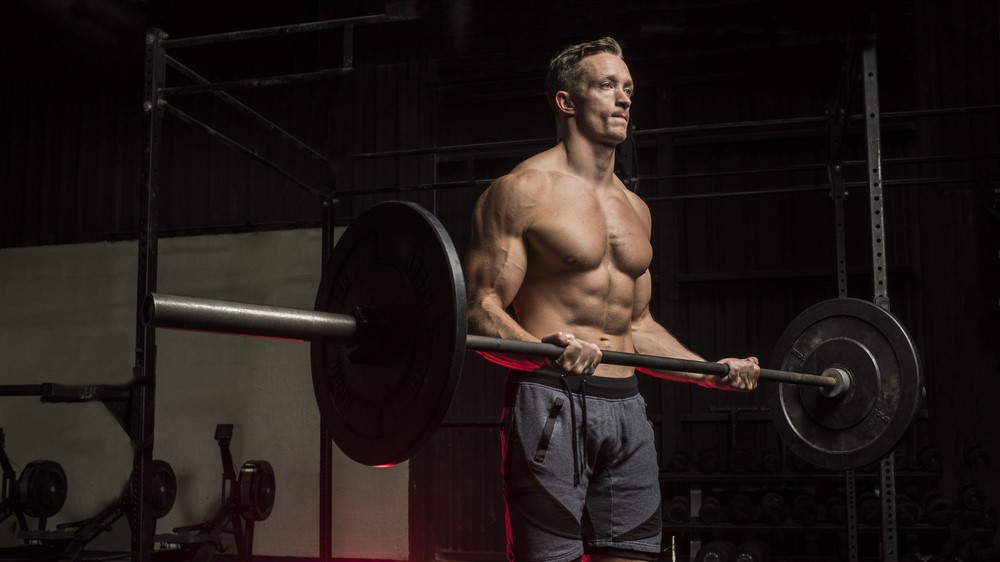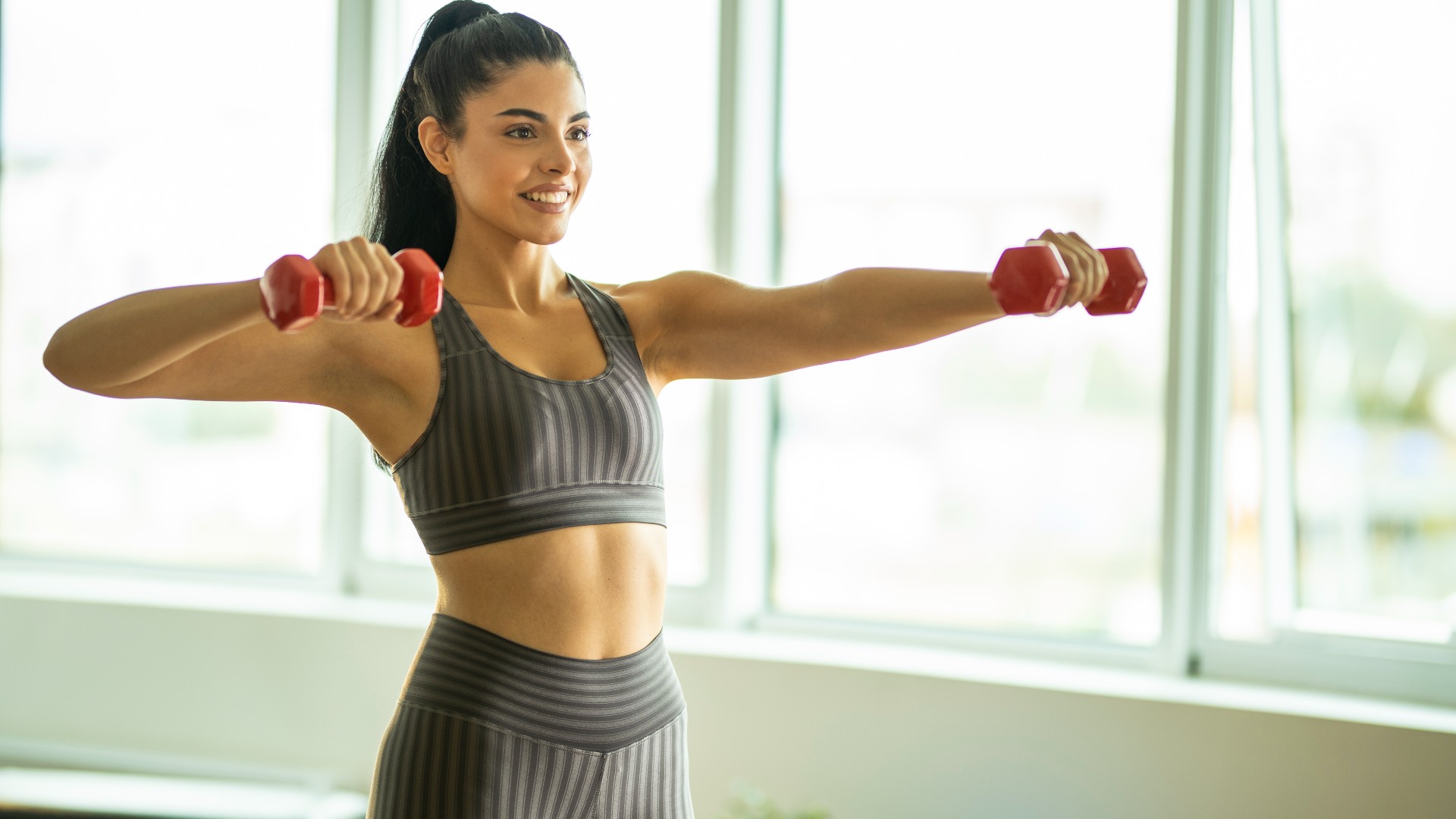
If you can’t decide whether to prioritize compound or isolation exercises, we’ll make it easy for you — it’s nearly always compound exercises.
A compound exercise predominantly forms functional training plans, including classes like F45, HIIT or CrossFit. Compound moves target multiple muscle groups, bones and joints, whereas isolation exercises (as the name suggests) focus on one muscle group to stimulate muscle growth.
If you’re unsure which will benefit your training regime, it’s time to break down the differences and benefits and why you should include both types in your resistance programs. And if you’re ready to lift weights, grab a pair of the best adjustable dumbbells for your next workout.
Isolation vs compound exercises: What’s the difference?
As we mentioned, the main difference between compound and isolation exercises boils down to how many muscles and joints are targeted. An example of a compound exercise is a push-up, which targets various muscle groups, including your anterior deltoids (the fronts of your shoulders), pectorals and triceps.
An isolation exercise would include bicep curls, which target different parts of the biceps, including the biceps brachii, brachialis and brachioradialis through elbow flexion.

Isotonic vs isometric movement
Let’s quickly cover two kinds of movements — isotonic and isometric. Isotonic exercise means your muscles lengthen and shorten during contraction through the same amount of tension (like a lunge), whereas isometric exercise is static, like a plank.
During an isotonic move, you have concentric contraction — the muscle shortens, and tension increases as it meets resistance, like the upward phase of a push-up, and eccentric contraction, when a muscle lengthens under load, like the lowering phase of a push-up or squat.
Get instant access to breaking news, the hottest reviews, great deals and helpful tips.
Eccentric and concentric loading both pack muscle and strength-building benefits in different ways, so isotonic compound moves could provide the most bang for your buck overall. But that doesn’t make isolation exercises redundant — it’s just worth knowing when to use them and how they can benefit your exercise regime.
Isolation vs compound exercises: Benefits
A compound movement is versatile and efficient and can be done with or without equipment, encompassing advanced weightlifting through to bodyweight training for beginners. No heavy weights to hand? Check out the 5 best ways to build muscle without lifting heavier weights.
The more closely a move mimics how you move throughout the day, the better. You could expect to see pulling, bending and twisting movements — all helping improve how you move as get older, build strength and power and develop muscle mass, coordination, flexibility and balance.
Isolation exercises are great at quickly fatiguing one muscle group and focusing on areas of weakness, imbalance or previous injuries that need rehab. Your more powerful muscles can’t take over, so the targeted muscle group must work through the full range of motion. Strengthening and ironing out any weaknesses can help your body work more efficiently with better quality, reducing injury risk.
And research has even shown that a partial range of motion during moves like bicep curls could also trigger muscle growth by limiting oxygen to the muscle tissues — called hypoxia.
Isolation vs compound exercises: Drawbacks
By definition, isolation exercises target fewer muscles in one plane of movement and don’t teach the body to work as a unit. If your goal is to strengthen your back and biceps, you could include exercises such as rows and pull-ups that target both rather than isolating your biceps with curls. That aside, isolation exercises are great accessory moves to add to training programs.
How to use isolation exercises
Accessory exercises are ‘supporting’ moves to a ‘primary’ compound exercise — this is when isolation moves can shine. Accessories are usually used in super sets with a primary exercise and little to no rest, but they don’t have to be an isolation exercise.
If you choose to use them, you could superset a deadlift (compound) with hamstring curls (isolation) to develop your hamstrings.

Either way, throwing isolation exercises into the mix is great if there's a particular area you want to work on or if you plan to build definition in one muscle group.
How to use compound exercises
Compound moves with or without weights are always beneficial, but we love using them as part of a calisthenics workout, which includes bodyweight-only exercises. Beginners can get as much out of them as advanced weightlifters, and those who want to lose weight could burn more calories when adding them to high-intensity training.
An exercise program formed with compound exercises works more muscles, so it could offer a higher calorie burn when also raising your heart rate for a prolonged time.
Sport-specific training includes both types — compound and isolation — but how they’re used will depend on the skills and goals of the athlete. Although compound exercises are widely used, isolation exercises used in sports can help athletes strengthen weaker muscles or rebuild strength after injury.
Either way, you'll see multi-joint moves crop up just about everywhere.
Isolation vs compound exercises: Verdict
Depending on your goals, both are beneficial, and isolation exercises complement compound exercise. For example, a bicep curl focuses solely on developing bi’s Arnold Schwarzenegger would be envious of, which will benefit moves like rows and pull-ups. Equally, upping your pull-up game will naturally help strengthen your biceps.
If you’re coming back from injury — think ACL or a rotator cuff tear, for example — a physio might single out muscle groups to work on as part of a varied exercise routine.
More from Tom's Guide
- Hypertrophy vs strength training: which is better for building muscle?
- Barbells vs dumbbells: which is better for building strength and muscle?
- Get the low-down on progressive overload.

Sam Hopes is a level 3 qualified trainer, a level 2 Reiki practitioner and fitness editor at Tom's Guide. She is also currently undertaking her Yoga For Athletes training course.
Sam has written for various fitness brands and websites over the years and has experience across brands at Future, such as Live Science, Fit&Well, Coach, and T3.
Having coached at fitness studios like F45 and Virgin Active and personal trained, Sam now primarily teaches outdoor bootcamps, bodyweight, calisthenics and kettlebells.
She also coaches mobility and flexibility classes several times a week and believes that true strength comes from a holistic approach to training your body.
Sam has completed two mixed doubles Hyrox competitions in London and the Netherlands and finished her first doubles attempt in 1:11.
